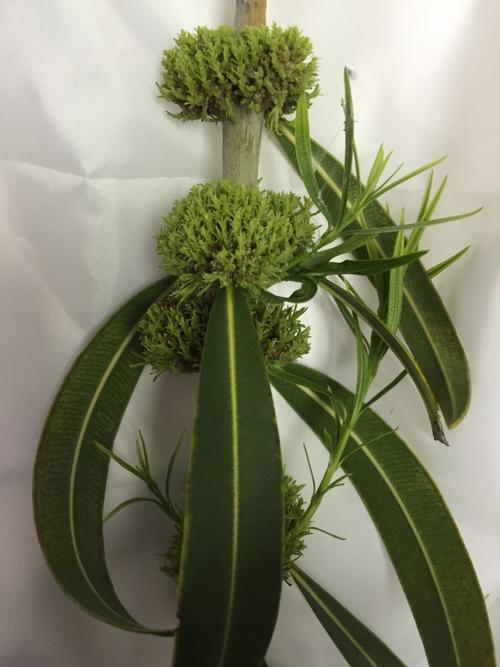Q: I am finding strange growths on my oleander. What is causing this and what can I do about it?
A: Your oleander sample is showing symptoms of a witch’s broom (just in time for Halloween), caused by a fungus called Sphaeropsis tumefaciens that is commonly seen on oleander and other landscape plants. To manage this situation, prune branches at least 6 inches below where symptoms are seen. Look at the cut end of the stem to see if there’s any discoloration from the fungal growth in the wood. Prune that branch back further, if so. Make sure to prune during dry times, avoiding periods when rainfall is expected 24 hours before or after pruning. To prevent infection of unaffected plant parts, dip pruning tools in a disinfectant such as 10 percent Clorox or rubbing alcohol before using them on another branch or plant. If you have a bucket of bleach handy, with several pairs or pruners on hand, make one cut, then place the pruner in the bucket, and retrieve another one from the sanitizing solution. Bleach needs a good 30 seconds to sanitize the pruner surface if this disease is to be killed. Severely infected plants should be removed and destroyed. No chemical fungicides are available to control this disease. We don’t know of any Oleander cultivars that have resistance to this disease.
Peter L. Warren is the urban horticulture agent for the Pima County Cooperative Extension and the University of Arizona. Email: plwarren@cals. arizona.edu





